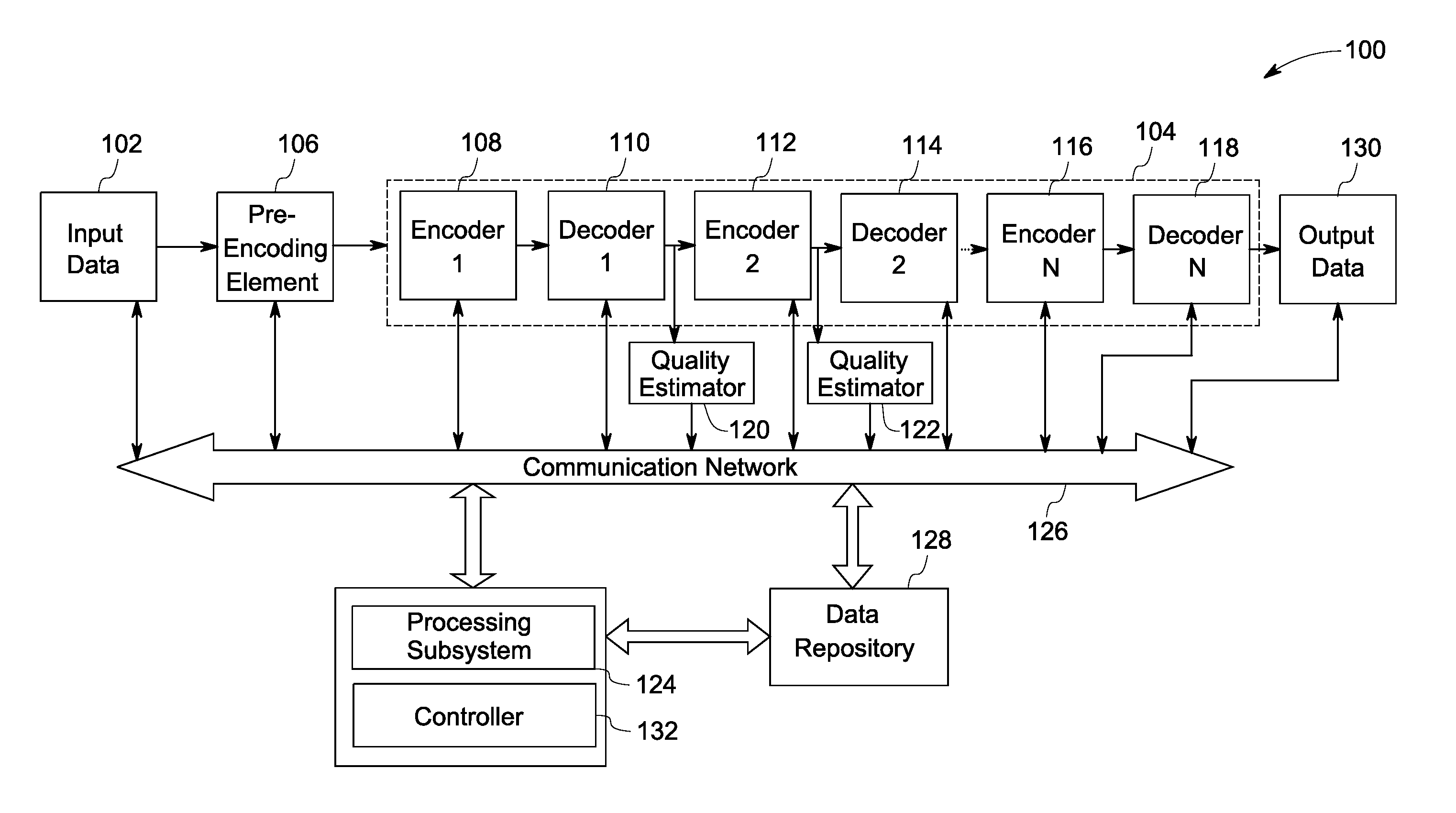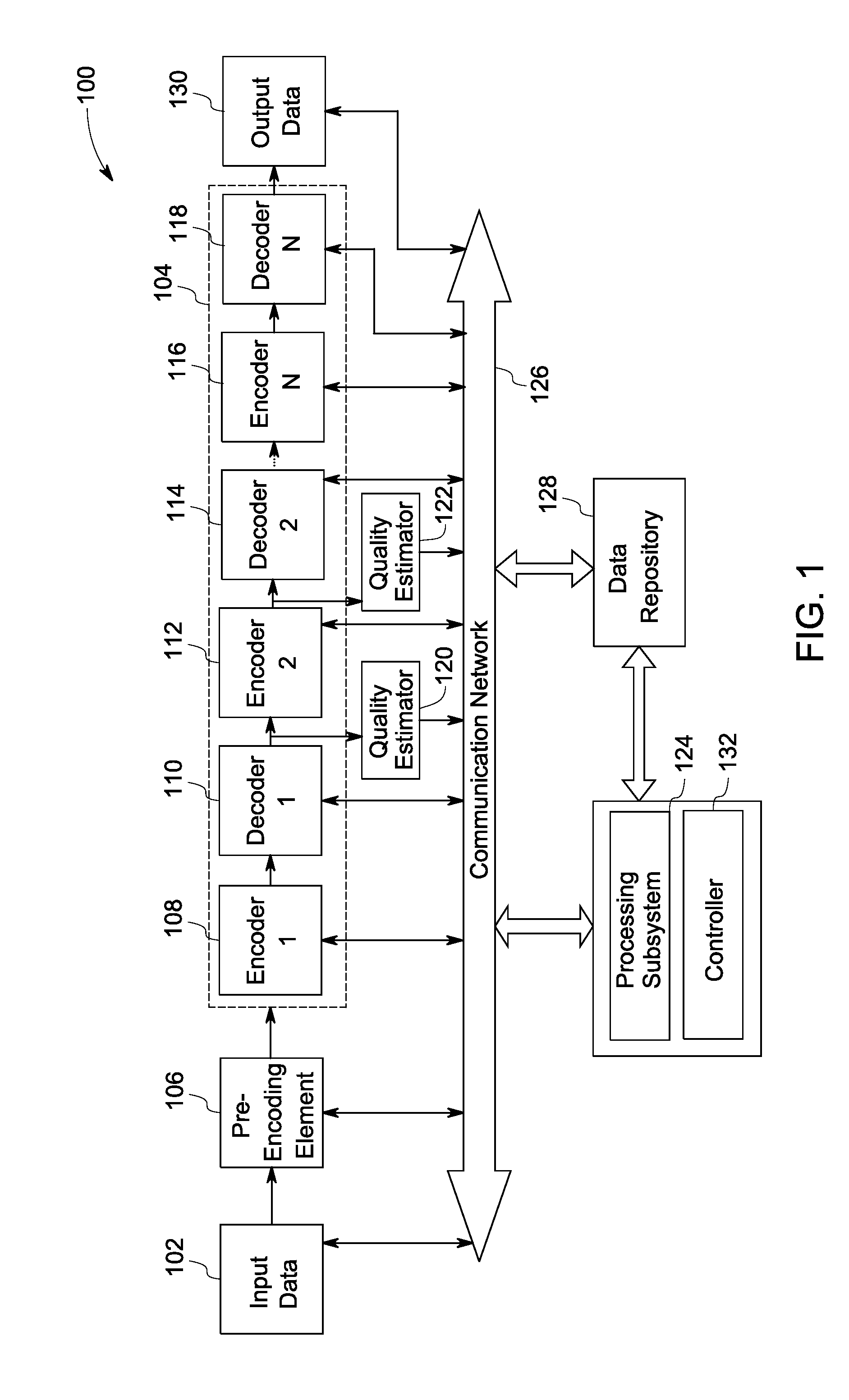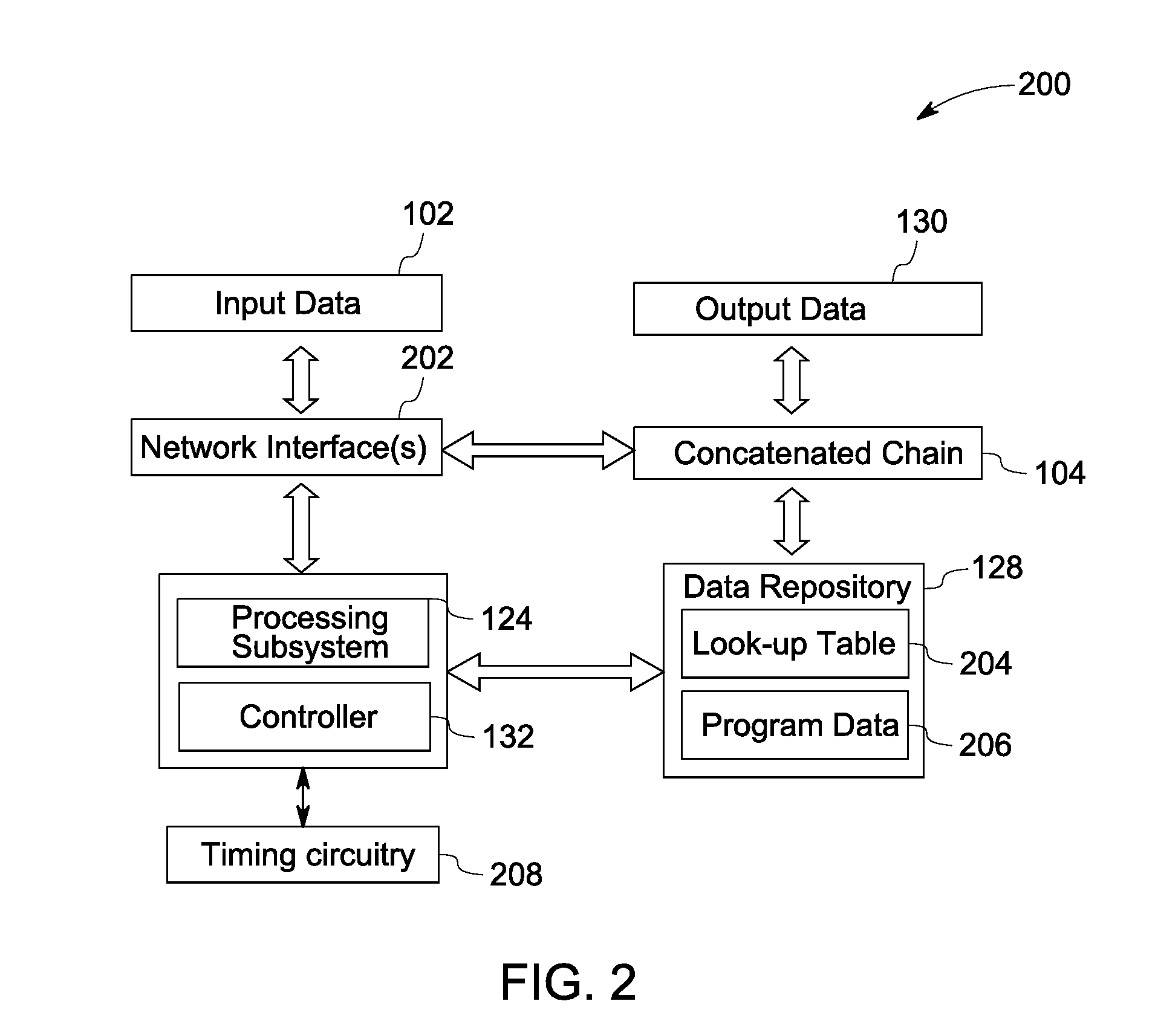System and method for enhancing data compression using dynamic learning and control
a dynamic learning and control technology, applied in the field of data compression devices, can solve problems such as the inability to fully realize the full effect of the data compression, and the inability to fully realize the data compression effect,
- Summary
- Abstract
- Description
- Claims
- Application Information
AI Technical Summary
Benefits of technology
Problems solved by technology
Method used
Image
Examples
Embodiment Construction
[0012]In the following sections, a system and a method for enhancing data compression in a concatenated chain of encoder-decoder pairs are presented. Embodiments illustrated hereinafter describe a data compression system and a method for enhancing data compression capable of ‘learning’ to optimize compression performance of the overall concatenated chain over a period of time. Particularly, the system is configured to iteratively vary one or more parameters corresponding to an encoder-decoder pair until output data having either or both of a desired quality and compression rate is obtained from the corresponding encoder-decoder pair. The system is further configured to learn to optimize operation of the concatenated chain by optimizing each of encoder-decoder pairs based on the evaluation of quality metrics determined for each of the encoder-decoder pairs. The system, thus, unifies data rate control, thereby allowing better resource allocation for achieving a desired level of optimi...
PUM
 Login to View More
Login to View More Abstract
Description
Claims
Application Information
 Login to View More
Login to View More - R&D
- Intellectual Property
- Life Sciences
- Materials
- Tech Scout
- Unparalleled Data Quality
- Higher Quality Content
- 60% Fewer Hallucinations
Browse by: Latest US Patents, China's latest patents, Technical Efficacy Thesaurus, Application Domain, Technology Topic, Popular Technical Reports.
© 2025 PatSnap. All rights reserved.Legal|Privacy policy|Modern Slavery Act Transparency Statement|Sitemap|About US| Contact US: help@patsnap.com



